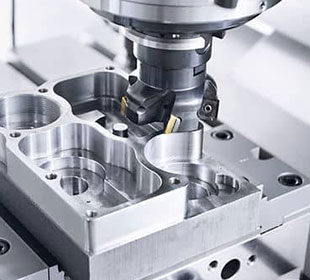6061 aluminum is a popular choice for CNC machining due to its excellent machinability, good mechanical properties, and wide range of applications. Here are some key points to consider when using 6061 aluminum for CNC machining:
Material Properties: 6061 aluminum is an alloy that consists primarily of aluminum, magnesium, and silicon. It offers good strength, excellent corrosion resistance, and is easily weldable. Its mechanical properties make it suitable for a wide range of CNC machining applications.
Machinability: 6061 aluminum is known for its excellent machinability. It can be easily cut, drilled, milled, and turned on CNC machines. Its chips break easily, which reduces the risk of tool wear and chip buildup.
What should you notice when using 6061 aluminium for cnc machining?
Tool Selection: When machining 6061 aluminum, carbide cutting tools are commonly used due to their hardness and durability. High-speed steel (HSS) tools can also be used but may wear out faster.
Cutting Speeds and Feeds: Proper cutting speeds and feeds are crucial for achieving good results when machining 6061 aluminum. Consult the tool manufacturer’s recommendations or machining handbooks for specific parameters.

Coolant: The use of coolant is important to dissipate heat generated during machining and to help prolong tool life. Flood coolant or mist coolant systems can be effective in reducing heat buildup.
Clamping: Ensure that the workpiece is securely clamped to prevent vibrations and movement during machining, which can result in inaccuracies and damage to the part.
Surface Finish: 6061 aluminum typically produces a smooth surface finish when properly machined. If a specific surface finish is required, select the appropriate tooling and machining parameters accordingly.
Chip Control: Proper chip control is essential to prevent chip entanglement and tool damage. Using the correct cutting tool geometry and chip breakers can help manage chips effectively.
Post-Machining Treatment: After machining, 6061 aluminum can be anodized or given other surface treatments to enhance its appearance, corrosion resistance, and durability.
Safety: Always follow safety guidelines when working with CNC machines and aluminum materials. Wear appropriate personal protective equipment (PPE) and follow the manufacturer’s recommendations for machine operation and tool handling.
Remember that specific machining conditions and requirements may vary depending on the CNC machine, tooling, and the complexity of the part being machined. It’s essential to consult with your machine operator, tool supplier, or an experienced machinist to optimize the CNC machining process for 6061 aluminum based on your specific project needs.

